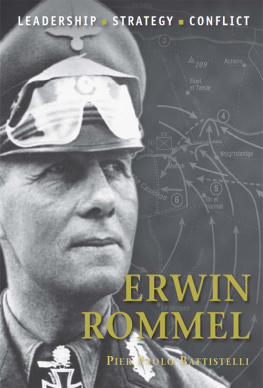I would like to give special thanks to Dr Rolf Wichmann of the UN High Commission on Human Settlement, Nairobi, for translating the German documents, and for his encyclopaedic knowledge of German forces in the Second World War. I would also extend a similar deep thanks to David List of the BBC, for his intimate knowledge of the Second World War Special Forces, his patient assistance, and particularly for helping me compile the initial nominal roll. I am extremely grateful for the crucial help of Ronald Youngman of the Commando Association, and the advice of Henry Brown, formerly of the Commando Association.
A great debt of gratitude and admiration is due to those who took part in the raid or its preparation: Jim Gornall MM, Charles Lock, Frederick Birch and Sir Thomas Macpherson MC, for their personal accounts. I would also like to thank the survivors of 11 (Scottish) Commando, and other Second World War special forces, who wrote to me and sent me various documents, including George, the Earl Jellicoe DSO, Sir Carol Mather MC, Robin McCunn, Walter Marshall, Eric Garland MC, D.D. Drummond, Adam B. Archibald and Jimmy Foot.
I would like to add an additional thank-you to Lord Roger Keyes, second Baron Keyes of Zeebrugge, for both the personal interview and for crucial family documents.
Further deep thanks go to Mary Louise Guiver and Charles Lock junior, the children of Charles Lock, for giving me access to their fathers diaries and letters; to Mrs Ruth Lock for her personal account of life on Arran; Mrs June McCunn for her letters relaying her husbands experiences in 11 Commando; Paul Hughes, grandson of Malcolm Spike Hughes, and his aunt, ne Alice Hughes; John Terry, son of Jack Terry DCM; William Briggs of the Glasgow Herald , for archive material, and for his assistance in finding survivors of the raid; Alan McSherry of the Cameronland Museum; Bert Riggs, Archivist, Centre for Newfoundland Studies, University of Newfoundland, for details of Joseph Kearneys letters; Hans Edelmaier and his publisher for sending me a copy of Das Rommel Unternehmen ; David and Margaret Short of the Spean Bridge Hotel, Scotland, which houses the Commando Museum, and John Condon, who sent me the background material on John Haselden.
I am grateful for the assistance of the staff of the Public Records Office, Kew (now the National Archives), and to the staff of the Liddell-Hart Centre For Military Archives at Kings College, London. I owe a deep debt of gratitude to my editor at Weidenfeld & Nicolson, Ian Drury, for his advice and suggestions, and further special thanks to my agent, Anthony Goff, and his assistant Georgia Glover, without whose help my research would not have been possible. Last but not least, I would like to thank my wife, Mariantonietta, and my two children, Burton and Jade, for their encouragement while I was researching and writing this book.
Michael Asher
Langata, Nairobi, 2004
OPERATION CRUSADER
DAY 2
19 November 1941 13451400 hours
It felt like a horse kicking him from behind. He went down, sprawling into the sand. Lieutenant John M. Pryor of the Special Boat Section lay on the beach, his thigh pumping blood, while enemy rounds licked up spurts of dust all around him. The bullet had been fired by one of the forty Italian colonial carabinieri who were now skirmishing towards him downhill under a hail of covering fire. The wound looked bad, but curiously, there was no pain. I lay there and thought, well, Ive often hit a rabbit in the back legs, said Pryor. I hope it doesnt hurt more than that, because that was nothing.
Minutes earlier, armed only with a Webley .38 revolver and a No. 36 Mills grenade, John Farmer Pryor had advanced to within 150 yards of the enemy in a vain attempt to convince them that an outflanking movement was in progress. In fact, the only man with him a commando private whose name he never knew was pinned behind a rock, his Thompson sub-machine-gun jammed. Pryor had assured his one-man team that the carabinieri they were up against couldnt hit a barn door at twenty paces, but closer up he had spotted a section of steel-helmeted Italian regulars on the hill behind the Arabs, taking careful aim. At that point he decided hed got close enough. As he turned and tried to make his way back towards the command post as fast as he could, the bullet had taken him.
Now he crawled behind a flat stone and set it on its edge for cover, but when two ricochets pinged off it, he realized that he would soon be exposed to the advancing enemy. His legs were drenched in blood but, with a last titanic effort, he dragged himself on to his knees and managed to crawl ahead of the Italians a quarter of a mile back to where the men of 11 Commando lay in a defensive formation around the caves they had withdrawn to the previous night.











